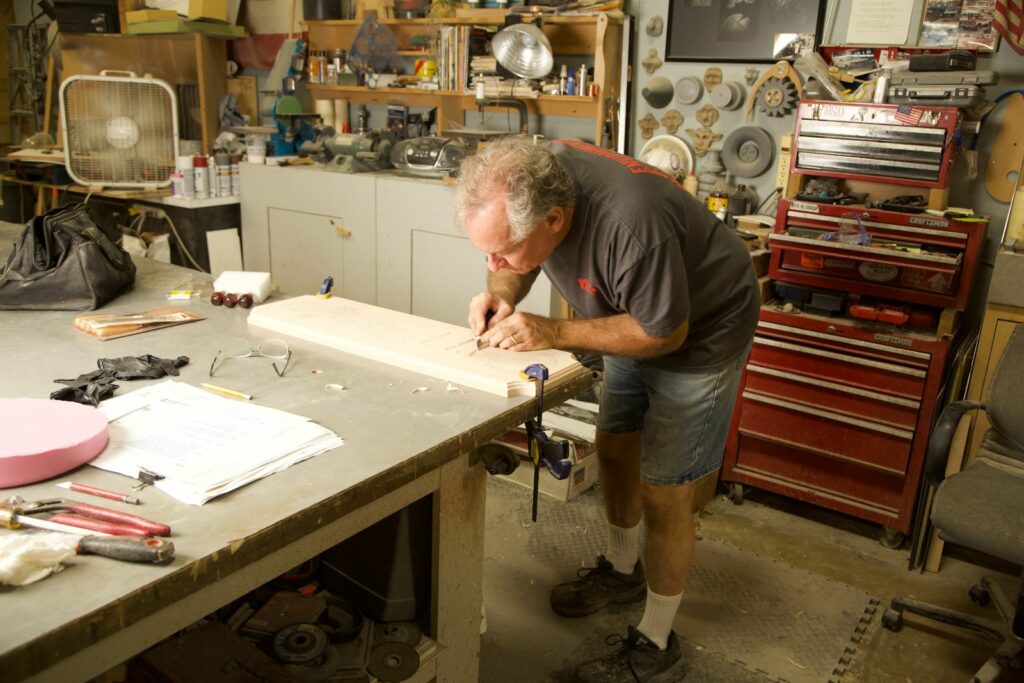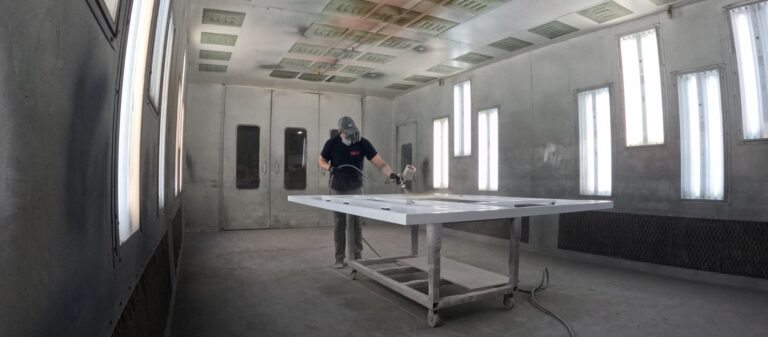In the United States, there are over 700,000 people employed as carpenters or fabricators. Carpentry and fabrication are essential to the manufacturing of products we use every day. Custom carpenters are among some of the most well-paid workers in the industry, and it’s because of the wealth of knowledge the job requires. Custom fabrication jobs also require highly skilled laborers to provide quality work.
The History of Carpentry and Fabrication
While carpentry and fabrication are similar kinds of work, the terms aren’t interchangeable. Typically, carpentry refers to making things out of wood, while fabricators most commonly work with metal or plastic. At the higher levels, fabricators and carpenters both work from written plans to build a structure from a design.
Because factory work only came about in the 18th century, fabrication is a relatively new field. However, carpentry dates back much further since people have been building structures from wood for millennia. With advances in technology and building techniques, carpentry and fabrication call for skilled workers.
Almost anywhere there are people, you can find examples of carpentry and fabrication. Buildings, furniture, and machinery all rely on carpenters, fabricators, or both. Even household items like cookware and tools are the result of fabrication. Without skilled workers, many objects we encounter every day would be impossible.
What Do Custom Carpenters and Fabricators Do?
The day-to-day life of carpenters and fabricators involves many different challenges. Both workers need to be able to create accurate cuts and take precise measurements.
Equipment
Additionally, carpenters and fabricators have to use specialized tools and equipment.
Carpenters and fabricators might use any of the following every day:
- Power tools
- Saws
- Drill press
- Sanders
- Joining hardware
- Tape measure
- Square
- Angle finder
Skills
A specialized skill that fabricators usually need to have is the ability to weld. Welding is the use of heat to join two pieces of metal together and requires years of practice to become an expert.
Custom carpenters, on the other hand, are experts in different techniques for joining wood. Creating seamless and sturdy wood joints takes a steady hand and years of training.
Projects normally start with an engineer creating a technical drawing or blueprint. From this point, the worker determines what materials they need and the cuts they need to make. For carpenters, the material list is mostly lengths of wood and different kinds of hardware. Fabricators can use many different kinds of metal beams or tubing.
Once the materials are cut, it’s important to clean up cut edges with a sander to avoid splinters or sharp edges. Then the materials are ready for assembly. To assemble metal pieces, fabricators often make small welds known as “tack welds.” These welds are easy to break should a part need to be moved before the final welds.
Carpenters may assemble wooden pieces using one of several techniques. Wood glue is a common solution for assembling pieces before permanently joining them with nails or screws.
Because custom projects come in many different shapes and sizes, fabricators and carpenters often work on something new every day. While manufacturing is a hands-on job, it requires technical knowledge as well as good math skills. Calculating and reading measurements means carpenters and fabricators regularly work with numbers.
New Technology
Fabrication and carpentry, like any industry, are constantly evolving as new technologies arrive. Many technological advancements are changing the manufacturing industry in exciting new ways.
CNC Machining
CNC stands for computer numerical control. This refers to any machine that shapes a material automatically from a programmed pattern of movement. CNC machines can be used on wood, metal, or plastic. Different types of CNC machines include mills, lathes, and drill presses.
Instead of making the same cuts repeatedly, fabricators and carpenters can use a CNC machine to make the cuts automatically. This makes the manufacturing process faster, easier, and more precise.
Robotics
Robotic technology has helped manufacturers automate many different processes. Facilities can program robots to assemble, cut, and even weld pieces. While robots can perform some tasks faster and more precisely than human workers, custom jobs still need a human touch. In larger facilities that rely on robotic machinery, fabricators and carpenters often work alongside robots.
3D Printing
For specialized hardware, prototypes, and custom projects, 3D printing has become a powerful tool in carpentry and fabrication. Designers create 3D models using software, and 3D printers produce the object using specialized plastic filaments. In carpentry and fabrication, certain fittings that would be difficult to manufacture by hand can be 3D printed in minutes.
Start an Exciting Journey
Custom carpenters and fabricators are still in high demand in today’s job market. These careers require highly skilled workers with specialized knowledge. Fabricators and carpenters can work on a wide variety of projects and rarely do the same thing day in and day out.
Fabrication craftsmen are essential to any company that produces custom-built structures. 1220 Exhibits creates customized exhibits and installations of all kinds to help our clients bring their vision to life.
If you want to learn more or are interested in joining our design team and beginning your career in fabrication or carpentry, check out our website and talk to an expert!









